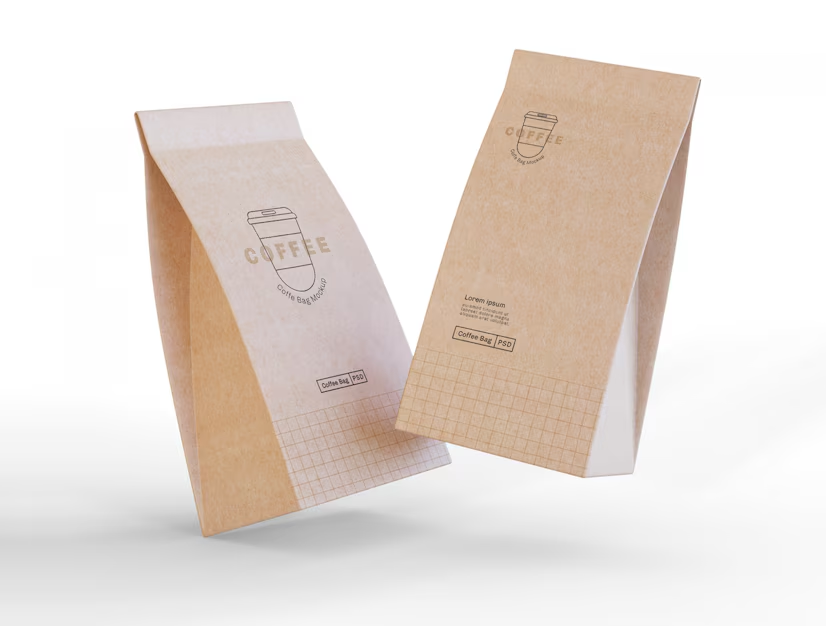Packaging isn’t just about wrapping your product; it’s a powerful tool for attracting consumers and conveying your brand’s message. Yet, several common mistakes can undermine its effectiveness. Here’s how to identify and rectify these pitfalls:
Inconsistent Brand Look 🔍
Consistency is critical to establishing a solid brand identity and fostering consumer recognition. Imagine if your favorite brand changed its packaging every time you saw it—confusing, right? Inconsistent branding can dilute brand loyalty and confuse customers. When your packaging lacks uniformity across different products or lines, it can make your brand appear disjointed and unprofessional.
Enhancement: Illustrate the impact of inconsistent branding: “Imagine walking down a store aisle where products from the same brand look completely different. It’s like meeting someone who changes their appearance every time you see them—it’s hard to trust or recognize them!”
Forgetting Your Customers 🎯
Understanding your target audience is fundamental to effective packaging design. Your packaging should resonate with their preferences, lifestyles, and values. Designing packaging that doesn’t connect with your audience can lead to missed opportunities and reduced sales. Your packaging should speak directly to the desires and needs of your customers, making them feel understood and valued.
Enhancement: Guide effective market research methods: “To create packaging that truly speaks to your customers, dive deep into their preferences and behaviors. Use a mix of surveys, focus groups, and social media analytics to uncover insights that inform your design decisions.”
Fix: Utilize research insights to tailor visual elements and messaging that align with your customer’s expectations. For instance, if sustainability is important to them, use eco-friendly materials and communicate your commitment to the environment on your packaging. Personalize the experience for your customers by considering their cultural background, age, and geographical location when designing your packaging.
Overcomplicating Your Packaging 🤯
In today’s fast-paced retail environment, simplicity and clarity are crucial. Consumers make quick decisions, often scanning shelves for products that stand out and communicate their benefits. Packaging that overwhelms you with too much information, complex graphics, or conflicting messages can confuse and deter potential buyers.
Enhancement: Clarify essential information: “Consumers should understand what your product offers at a glance. Highlighting key benefits, usage instructions, and unique selling points effectively can make a decisive impact.”
Fix: Prioritize important information using clear typography, concise language, and a structured visual hierarchy. Icons, bullet points, and color coding can enhance readability and comprehension. Ensure that crucial details are prominently displayed and easy to find, reducing the risk of customers overlooking essential information. Simplicity in design not only aids consumer decision-making but also enhances the aesthetic appeal of your product on the shelf.
Ignoring User Experience 🤔
Packaging design should extend beyond aesthetics to consider functionality and user-friendliness. Think about how consumers interact with your product in-store and at home. Packaging that is difficult to open, store, or use can frustrate customers and diminish their overall experience with your brand.
Enhancement: Stress the importance of usability testing: “To ensure your packaging enhances rather than hinders the user experience, conduct rigorous usability tests. Observe how consumers handle your packaging in real-world scenarios, gathering feedback on ease of opening, handling, and resealing.”
Fix Design packaging that is ergonomic and intuitive. Consider factors such as ease of opening, resealability, and compatibility with common storage spaces. Prioritize sustainability by opting for recyclable materials and minimizing packaging waste. By prioritizing user experience in your packaging design, you can enhance customer satisfaction and loyalty.
Trying Too Hard (or Not Enough) to Stand Out 🌟
Finding the right balance between differentiation and coherence with competitors is crucial. Your packaging should capture attention on the shelf while staying true to your brand’s identity and values. Striking this balance ensures that your product stands out for the right reasons, resonating with your target audience without appearing gimmicky or out of touch.
Enhancement: Discuss effective differentiation strategies: “Standing out doesn’t always mean being the loudest voice in the room. It’s about crafting a unique visual language that communicates your brand’s story and resonates with your audience.”
Fix: Conduct a thorough competitive analysis to identify gaps in the market and capitalize on opportunities to position your product uniquely. Highlight your product’s distinctive features and benefits prominently on the packaging. Use innovative packaging materials, shapes, or design elements that reflect your brand’s personality and appeal to your target demographic. By differentiating effectively, you can carve out a niche in the market while maintaining coherence and relevance.
By addressing these common packaging design mistakes with strategic planning and execution, you can create packaging that not only protects your product but also enhances its appeal to consumers. Remember, effective packaging design should align with your brand identity, resonate with your target audience, and improve the overall customer experience.
Contact Foliate for Expert Packaging Design Solutions!
Ready to enhance your packaging? Contact us at Foliate for expert guidance in creating compelling packaging designs that captivate your audience and drive sales. Whether you’re looking to refresh your brand’s look or launch a new product, our team is here to help you make a lasting impression on the shelves. 🌿

